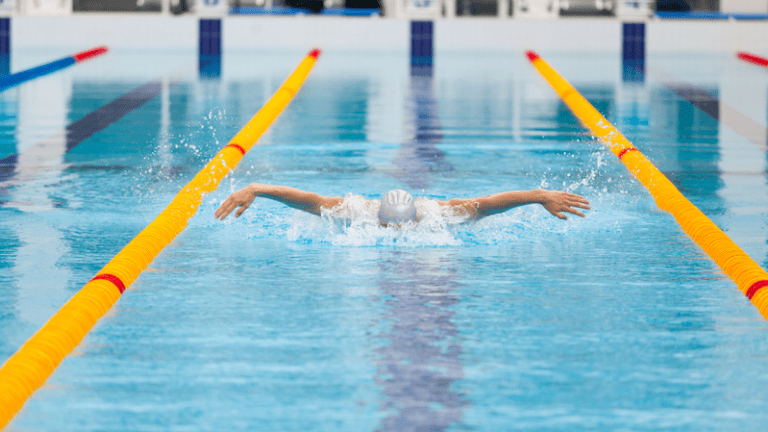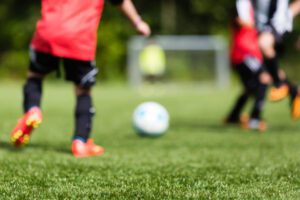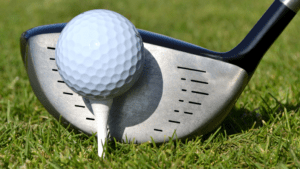The two best and easiest ways to improve your swimming efficiency: maximize your DPS and refine your kick.
1. Maximize your DPS
Whats is DPS?
DPS stands for Distance Per Stroke, or the amount of strokes taken to get from one side of the pool to the other. Increasing your DPS allows for maximum velocity using minimal effort. In other words, if swimmer A takes 23 strokes to get from one end of the pool to the other and swimmer B takes 15, who do you think spent more energy?
What causes a low DPS?
The most common causes I see in swimmers are “dropped” elbow, short arm syndrome and inclined body line. Dropped elbow is a term I use when swimmers drag their elbow backwards (picture elbowing someone who is standing behind you) in the pull. This will cause the arm to essentially slip through the water, getting almost no pull and therefore no force is being generated backwards and propelling the swimmer forward. Short arm syndrome is when a swimmer simply places their hand too close to their head when entering the water and therefore taking an extremely short and inefficient pull. Having an inclined body line while swimming refers to a swimmer having their hips dramatically lower in the water than their head. This will cause the body to be swimming at an incline and making stroke efficiency a lot harder.
What can I do to maximize my DPS?
Though there are a number of different drills to do individually, and strict practice will certainly help, the best thing to improve your DPS is to find a private coach you can formulate a routine specific to you.
Here are a few drills and technique tips to help maximize your DPS:
- 6 kick switch drill. The swimmer kicks on his/her stomach in a streamline position. Every 6 kicks, he/she takes one stroke. This forces the swimmer to slow everything down and feel what it is like to take less strokes per length of the pool, allowing for a much greater level of concentration on each individual stroke.
- Ketch-up drill with a kick board or barbell. The swimmer swims with a kick board or barbell out in front of them, holding the end of the board (closest to them) and taking turns with their arms pulling. One arm takes a stroke while the other holds the board and then when the first arm returns, the other arm pulls. This helps elongate a stroke that is too short. It gives the swimmer a target for their hand to hit and can help build the bridge of creating a longer stroke.
- Eyes to toes drill. I made up this drill from years of coming across the same problem. The swimmer swims with their head so far down that they are trying to look at their toes. This is effective for a swimmer who has a habit of keeping their head up too high and thus their hips sink and their body line becomes incline. What often happens with this drill is that the swimmer won’t actually be able to get their head as low as instructed and will actually end up putting their head in the perfect position for an ideal stroke.
2. Refine your Kick
Why is kicking important?
The way the kick impacts a swim depends on the distance of the race. In a short race, having a strong, quick, powerful kick can help aid propulsion, whereas in a long-distance race, it can help balance a stroke and maintain overall rhythm. In either scenario, the kick is equally important to creating an efficient stroke.
What are some common mistakes?
Like with most things in swimming, kicking is something that should be constantly refined. The most common mistakes I see in a swimmer’s kick are: too much knee bend, ankle dorsiflexion and too much splash. When doing a freestyle, backstroke or butterfly kick, the knees should never bend past 90 degrees (even that’s too much). Having too much knee bend is going to take the action out of the hips and will desynchronize the stroke, ultimately making the stroke much less efficient. Ankle dorsiflexion refers to the ankle being bent so that the top of the foot is at a 90-degree angle with the shin. This is a position that should never take place in an active kick. When a foot tries to move through the water while is it in dorsiflexion, it will not be able to displace a significant amount of water and therefore generate very little propulsion. It is essentially the kicking version of dropped elbow. Another mistake to avoid while kicking is creating too much splash. This means that the swimmer is lifting their feet too high out of the water with each kick. In an efficient kick, there will be some splashing — that is normal, especially in a sprint event. But in most cases, a large amount of splash in a kick is unnecessary.
How can I refine these mistakes?
If the swimmer is experiencing multiple mistakes at once, I suggest using the following progression. Concentrate on only one aspect at a time, as it’s often challenging to try to fix multiple things at one time.
Progression:
- Kick against the wall with your hands against the wall and your head out of the water. Do this for 5 sets of 30 seconds kicking and 30 seconds off. Repeat, but this time with your head in the water.
- Next, kick with a kick board and with your head out of the water. Do this 2 times, at 25 seconds each.
- Next, kick with a kick board with your head in the water (be sure to breathe when necessary). Do this 2 times, at 25 seconds each.
- Next, kick on your back with your arms in streamline position. Do this 2 times, at 25 seconds each.
- Next, kick in streamline position on your stomach. Do this 2 times, at 25 seconds each.
- Lastly, swim 2x25s trying to incorporate changes as you do so.
Becoming and efficient swimmer can lead to greater endurance and faster times. I hope you all enjoyed my article and can either incorporate these tips yourself or help someone else!
How useful was this post?
Click on a star to rate it!
Average rating 5 / 5. Vote count: 1
No votes so far! Be the first to rate this post.




